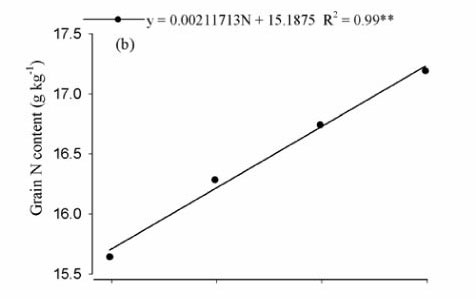The management of nitrogen fertilization is complex due to the various transformations of the nitrogen that occur in the soil-plant-atmosphere system, reducing the efficiency of the fertilization, productivity and the profit margin of the maize production areas. This study aimed to evaluate the effect of different levels of common urea and urea treat with NBPT [N-(n-butyl) thiophosphoric triamide] on the productivity and efficiency of the nitrogen fertilization in maize, correlated with simple economic analysis. The design of the field experiment was in randomized complete blocks with six repetitions, in a 2 x 4 factorial outline, made up of by two sources of nitrogen (urea and NBPT-treated urea) and four levels of nitrogen as top dressing (60, 120, 180 and 240 kg ha-1). The sources and applied nitrogen levels influenced the productivity and the leaf and grain nitrogen contents, while the production components (size and diameter of the ear, and percentage of straw and cob) were not altered. The agronomic efficiency of the nitrogen fertilization decreased with the increase of the applied nitrogen levels. The highest gross profit margin in the maize culture is obtained with 180 kg ha-1 of nitrogen supplied in the NBPT-treated urea.
Zea mays; nitrogen; urease inhibitor; agronomic efficiency; gross profit margin






